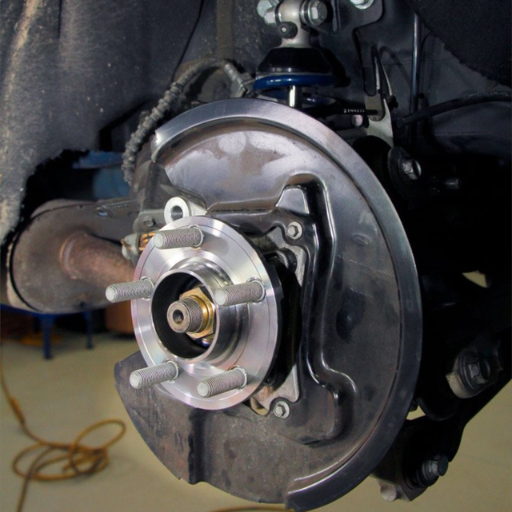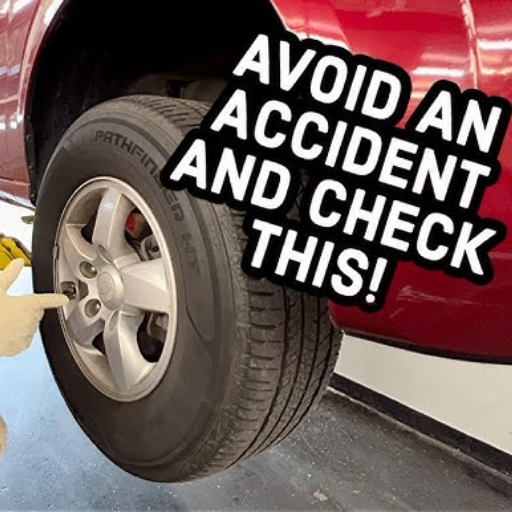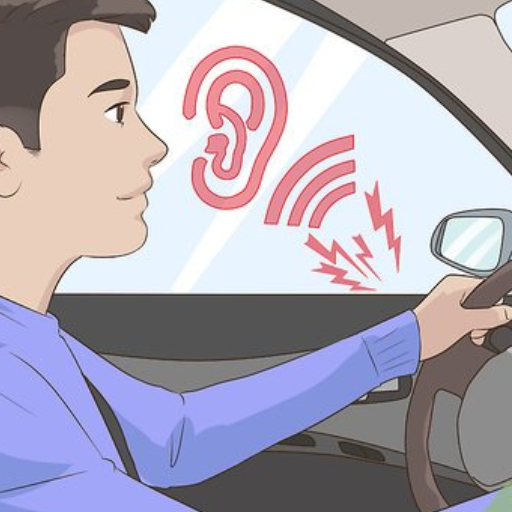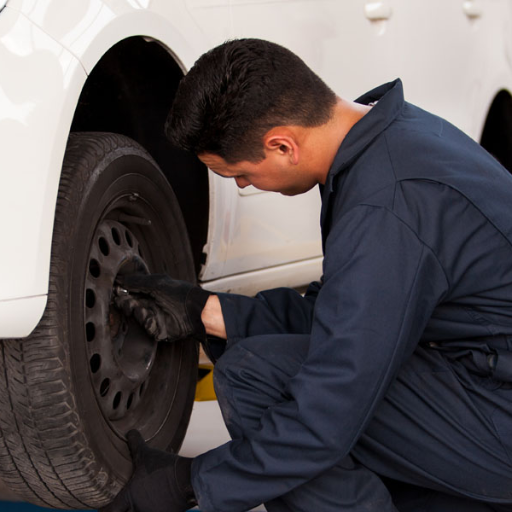One of the weakest links in a vehicle’s safety and functionality is a damaged wheel bearing. As a result of its negligence, the entire weight of the vehicle shifts, putting strain on the suspension system of the car as well as the road contact. However, there are some early warning signs that can help prevent further damage. In this guide, we will go through all the indicators of a damaged wheel bearing that you should keep a lookout for while driving.
The typical lifespan of a wheel bearing is around 80,000 to 100,000 miles, but conditions such as weather and other alterations to the car’s setup can cause it to wear out faster. Regardless, excessive wear is problematic and overturns the contact the wheels have with the surface, causing rattling and excessive heat to accumulate inside. In simpler terms, if you haven’t already noticed, a faulty bearing changes the entire wheel’s performance and handling.
What are the Symptoms of a Failing Wheel Bearing?

There are numerous signs that suggest the wheel bearings are beginning to fail, most of which are not easy to miss. Symptoms include loud and unusual humming, rumbling, or grinding sounds, particularly while turning or while the vehicle is in motion. Other indicators of the problem include abnormal shaking of the steering wheel or the floorboard, wobbling sensations while the vehicle is in motion, and abnormal wear patterns on the tires. If you begin to spot any of these symptoms, it is wise to tend to the situation before it deteriorates into something more troublesome. This will also be able to guarantee a safer experience while driving the car.
Identifying the Humming Noise from a Bad Wheel Bearing
If the bearing’s inner materials have worn out, corroded, or become dry, a humming noise will be heard, and this is typically due to a rapacious wheel bearing. As the wheel bearing has been compromised, it does not allow for the free rotation of the wheel; that is when the transmission of friction and shakes begins. Paying attention to this problem when driving, especially during cornering or constant acceleration and deceleration, will help in better diagnosing the problem, along with checking the wheel for play or rough rotation while watching it lift off the floor. Safeguarding against further mechanical damage and ensuring the safety of the vehicle are both concerns that require immediate attention, be it through repairs or replacements.
How to Diagnose a Bad Wheel Bearing?
To tell if the wheel bearing is bad or sound, it usually begins with the sound it makes, like a grinding, humming, or growling sound when the vehicle is turned or moved at varying speeds. Then, hoist the automobile by one side and spin the suspect wheel to see whether any excessive play or unusual roughness while rotating is present. When the bearing becomes worn out, it will vibrate or get some resistance when trying to rotate it. If the wheel is unsuccessful in operating while experiencing vibration or very stiff rotation, reconstruct the wheel bearing, replace it, or restore it, making the bearing performance high.
Signs of a Failing Wheel Bearing to Watch Out For
Typical symptoms of a defective wheel bearing can include hearing noise such as humming, rumbling, or grinding, which becomes louder while driving, experiencing the steering wheel vibrate, or recognizing inconsistency in the wear of the tires and the driving patterns. Furthermore, some of the other symptoms that you might see are an illuminated ABS warning light, increased torque while steering, and shaking or wobbling at higher speeds. Taking time to properly identify and quickly resolve such problems is advisable as it helps avert possible damage or risk during vehicle usage.
How to Identify a Bad Wheel Bearing While Driving?

My advice concerning bad wheel bearings is always to start with the clues that the vehicle offers. Heed the warning sounds, in particular, any grinding or a low humming noise that seems to escalate as you pick up speed. Observe how the car responds to the steering; does the steering wheel shake? Do the wheels shudder during cornering? These could definitely point to a problem with the wheel bearing. Take notice if there’s a wobble or roll at great speed, or worse still, an illumination of the ABS light. In my opinion, recognizing these things in their early stages is crucial in avoiding more expensive repairs later on.
Does the Noise Get Louder When You Turn Left or Right?
The noise, which gets louder, helps identify the faulty wheel bearing when turning left or right. Experience shows that if a vehicle turns to the left, the right side bearing is the culprit as it is more stressed and tends to become noisy. Therefore, if the noise created is greater than the preceding noise during the pointer’s right turn, the left side bearing should be blamed. It is quite easy to tell which one is which so that dismantling is not required at once. A disclaimer should be added here stating that all the tests should be made on open roads and attention should be paid to the details.
Understanding the Steering Wheel Vibrations
Vibrations in the steering wheel can emanate from a variety of different sources, and narrowing it down is often contingent on considering certain aspects. Let’s explain this point further and make it easier for you to diagnose:
- Wheel Balance: A few of the causes of steering vibrations are leaving the wheel imbalance unaddressed. Imbalances cause vibrations, especially at higher speeds, due to a weight unevenly distributed at the tires. One way to eliminate this type of issue is to ensure your tire balance is correct.
- Tire Condition: Worn out tire patches or flat spots are to be examined, There are times even bad patches patch rubbing could result in the vibration’s partial travel making its way to the steering wheel.
- Alignment Problems: If you have overused one or more of your vehicle’s tires or if you have ever hit a bump, the chances of your wheels being misaligned are high, so to fix the ticking in the alignment, check the availing of the correcting wheel.
- Suspension and Steering Components: Parts such as ball joints, tie rods, and bushings, when not treated regularly, might accumulate excessive slackness and, through that, might start vibrating.
- Brake System Issues: If the vibrations happen while braking systems are in, hint, the issue might arise from those rotors being warped; these rotors are expected to wear since they result in vibration due to transmitting uneven pressure through rotors.
Repetitively monitoring these parameters allows one to solve the steering wheel shimmy issues. One thing to keep in mind is that if you cannot determine the problem and have any doubts, it is advisable to seek assistance from a reputable repair specialist. A competent diagnosis is also of much practical benefit to car drivers as it enhances safety and maintains the car in good condition in the long run.
Checking for Wiggle and Play in the Axle
When tackling the job of inspecting an axle involves a thorough lookover. My first step is always to lift the vehicle and wobble the axle pinch bolt to check play. Increased slack usually signals worn components like CV joints or even bearings, which may cause serious problems in the future. Also, ensure the surrounding bearings are free from any rattling sound like clicking or grinding, as these are signs of damage. But for the more precise undertaking, I normally have my tools like dial indicators at hand. Routine performance of these checks helps to maintain the integrity of the axle and, consequently, the smoothness and safety of the vehicle.
Why is it Important to Know if a Wheel Bearing is Going Bad?

It is important to diagnose a deteriorating wheel bearing as it has a bearing on the safety of a vehicle. Defective wheel bearings have the potential to compromise control over a car and even lead to catastrophic failures while driving. This is not just the end of it; failure to address this issue can also result in needless damage to adjacent parts, which in turn can result in expensive repairs. Therefore, recognizing this issue early on can ensure a much safer driving experience whilst also prolonging the investment made into the vehicle.
Potential Risks of Driving with a Bad Wheel Bearing
Rather than getting into the details of the wheel bearing, let me start by saying the automotive market is one I know too well, and there is one thing I can vouch for, which is that driving with a faulty wheel bearing is very dangerous. With that being said, let’s further analyze the metrics of risk that we may face:
- Loss of Control
An impaired wheel bearing affects the rotating motion of wheels, this can throw a cars balance off and make it nuisance to manage, especially while turning or face braking. Once one loses control, the risk of an accident is very high which is the reason one should never neglect this problem.
- Excessive Tire Wear
In the event that your automobile wheel bearing fails, the wheels of your car will get looser and move sideways or rotate abnormally. As a result, you would suffer from split tire wear, which may require you to buy the tires sooner than anticipated, and as a consequence, more money would be spent.
- Damage to Other Components
A failing wheel bearing leads to more stress on the hub assembly, axle, and suspension system, which makes it worse. Such damage could escalate into severe mechanical problems later on, which would be quite expensive to repair.
- Noise that Worsens Over Time
A clear signal of a wheel bearing going bad would be a growling or humming noise from the wheels. This sound isn’t just an irritant, it also means that the bearing’s condition is slowly worsening which means the more you drive, the closer you are to a potential failure.
- Complete Wheel Detachment
No matter which auto shop you go to, wheel bearing replacement will vary in price. In the most extreme of situations, it can involve a wheel bearing failing and the accompanying wheel coming loose from the vehicle. Such an instance poses an absolute risk to both the driver and other people on the road.
When you have a bad wheel bearing, driving the car doesn’t become just an issue that is pitiable; it’s also a major security issue since it can lead to tremendous loss and damages if not fixed properly. If you have any suspicions at all, I would advise you to get the help of an expert straight away. Better to be on the safer side.
How a Bad Wheel Bearing Can Lead to Costly Repairs
neglecting bad wheel bearings not only risks one’s life but also increases the amount payable for repairs. Repeated collapsing of a wheel bearing creates strain on the hub assembly, axle, and even the suspension system. With the passage of time and use, this extra burden either leads to a chain reaction of mechanical failures or malfunctions. For example, excessive vibration may use up the tires earlier than expected, even the replacing a rough hub assembly might be needed. Because of these issues combined, fixing these problems can prove to be time-consuming and costly, turning a simple fix into an intricate one. Solving this problem quickly is not only cheaper but also saves you some trouble.
Can You Drive with a Bad Wheel Bearing?

Bad wheel bearings are not vehicle faults to ignore. Continuing to drive with damaged wheel bearings is dangerous as it can put your vehicle’s handling, stability, and overall safety in jeopardy. Bad wheel bearings often result in the loss of a tire or poor steering control, both of which can lead to an accident. Make sure to deal with such issues quickly both for your safety and that of other drivers on the road.
Understanding the Impact on Front or Rear Wheels
The Van or Pickup steering can be influenced by the failure of the front wheel bearing and loss of its operational capabilities. This might reveal itself through steering that is not symmetrical, or that is not crisp. Other than that, it is difficult to manipulate the vehicle. On the contrary, the rear wheel bearing, when disabled, affects the stability and smoothness of the ride. The indications, however, may alter somewhat in both instances, for they carry serious safety concerns while operating the vehicle and have to be addressed right away.
What Happens if You Ignore the Signs of a Bad Wheel?
As I have learned in the industry, ignoring the indicators for a faulty wheel bearing can turn out to be disastrous not just for your safety but also for your pocket. Without wasting time,e let me give you a brief account of the consequences that could ensue if the wheel bearing problem is not attended to:
- Decreased Vehicle Handling
Let us presume that the heat from the damaged wheel bearing seizes up, making your ability to steer a vehicle impotent due to a negative increase of friction by the damaged wheel while trying to make turns. Given the magnitude of control, the risk of losing an arm and a leg in unfinished attempts makes it much tougher trying to maneuver a vehicle while moving conserves itself.
- Excessive Tire Wear
If a wheel bearing starts to go bad, there will be uneven forces acting on the wheel, which will lead to abnormal tire wear. Tire replacement will become mandatory if for no other reason due to cost and not addressing this issue, as mentioned before.
- Noise Escalation
A slight humming sound, for instance, will, in the course of time, become a grinding or roaring sound if the bearing is fully worn out. Not ready to move – this implies internal elements of the bearing have, in fact, diminished further and are on track to suffer immense failure, too.
- Brake System Stress
A loose or malfunctioning wheel bearing causes insurmountable damage to the braking system as the forces placed on the wheel may not equal, which is a constant rotating force because you lose the ability to stop the vehicle reliably at critical intervals that require you the most – like when boom scenarios turn into the opposite of what was intended.
- Catastrophic Wheel Failure
The worst possible scenario for a bearing is completely debilitating noise, which is wheel failure. The overwhelming possibility of a fully disintegrated bearing resulting in the wheels of a vehicle locking up or even losing attachment is startling; all that said, locks sewing into one another is dangerous, but so is being on the road.
In order to minimize these risks, monitoring what the machine does at the early stages of use is crucial — listening for strange sounds, checking for vibrations, or steering resistance should be enough. If all these indicators start showing up then I would advise seeking the help of a professional mechanic in order to properly address the issue. Preventive care can prevent you from experiencing even greater complications later and guarantee you a seamless driving experience.
How do you tell which wheel bearing needs replacement?

The first step will be to replace the wheel bearing, but before tiring the car, notice if any mechanical noise is noticeable while beating. Usually, a rumble is heard, and it intensifies while driving at high speeds. At different speed levels, when the steering wheel is slightly turned, the broken wheel can be singled out if the noise changes or worsens. Then, lift the vehicle and unlock each wheel by gripping it from its sides and inducing some play. For example, if one of the wheels sounds loose or leads rough, realize that it would cause the W bearing to be replaced. Ultimately, all repairs and diagnostics should only be carried out by a qualified mechanic.
Determining if the Issue is with the Front Wheel or Rear Wheel
To decide whether the complication is with the front or rear wheel, concentrate on the area affected while driving. A problem with front wheel bearings should be audible, especially during turning motions, because the front wheels carry the weight in terms of the direction of forces applied. Problems with the rear wheel bearings, on the other hand, are said to be more of any constant noise during the turning of the steering wheel into any side. In addition, doing a manual check by lifting the car to spin each wheel can also contribute to the resolution of the faulty position, i.e., rough spinning or the presence of play on the suspected side will confirm the fault. The process of diagnosing and listening, as instructed above, can more accurately tell which is the issue between the front wheel bearing and the rear.
Conducting a Wheel Bearing Test to Pinpoint the Problem
To begin with, make sure the vehicle is lifted with a jack and placed securely in jack stands. Once raised, grab the wheel at 12 and 6 o’clock and slightly shake it back and forth. If there appears to be excessive play, then it is apparently a sign of a faulty wheel bearing. Now rotate the wheel to approximately double its depth and listen for any grinding or humming sounds; if you hear them, the wheel is worn out. Carry out these steps for each of the wheels so as to determine which wheel bearing is bad. To ensure all is well, it would sound better to reach out for a professional mechanic just in case there is a problem raised during the testing.
Reference
- Meineke: 6 Signs of a Bad Wheel Bearing
- Car Talk Community: How would wheel bearings feel if going bad?
- Car Talk Community: Bad wheel bearings. Is my diagnosis correct?
Frequently Asked Questions (FAQs)
Q: What are the common symptoms of a bad wheel bearing while driving?
A: Common symptoms of a bad wheel bearing include unusual noises such as grinding or humming, vibrations, and uneven tire wear. If you’re driving and notice these symptoms, it may indicate a bad wheel bearing.
Q: How can I tell if a wheel bearing is bad when there’s no play in the wheel?
A: Even if there’s no play in the wheel, you can still suspect a wheel bearing issue if you hear a consistent noise coming from the front or back of the vehicle, especially when turning.
Q: What kind of noise does a bad wheel bearing make while driving?
A: A bad wheel bearing often makes a grinding, growling, or humming noise. This noise can increase with speed and might become more noticeable when turning, indicating a bad wheel bearing.
Q: How do I determine if the noise is coming from the right wheel bearing?
A: To determine if the right wheel bearing is the culprit, listen for noise that intensifies when turning left, as this puts more load on the right wheel bearing.
Q: Can wheel wobble indicate a bad wheel bearing?
A: Yes, wheel wobble can be one of the signs of a bearing issue. If your wheel wobbles while driving, it could mean a wheel bearing has failed or is going bad.
Q: How do I check if the noise is coming from the front or back wheel bearings?
A: To check if the noise is coming from the front or back, jack up your car and spin each wheel. Listen for any unusual noise or feel for roughness, which might suggest a wheel bearing going bad.
Q: Can I determine if the noise is from the driver’s side or passenger side bearing?
A: Yes, you can often tell if the noise is from the driver’s side or the passenger’s side by listening for changes in the noise when turning. A louder noise when turning right suggests an issue with the left wheel bearing, and vice versa.
Q: What should I do if I suspect a wheel bearing is going bad?
A: If you suspect a wheel bearing is going bad, it’s important to have it inspected by a professional mechanic. They can determine if a replacement is necessary to ensure safety and prevent further damage.
Q: How can I tell if I need to replace a bad wheel bearing?
A: You need to replace a bad wheel bearing if you notice persistent noise or vibrations, or the wheel feels loose when checked. Immediate replacement can prevent further damage to your vehicle.
